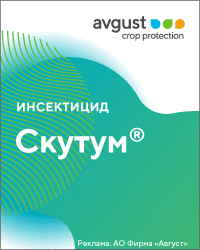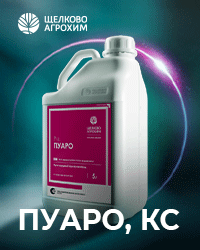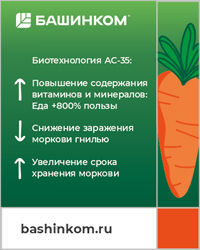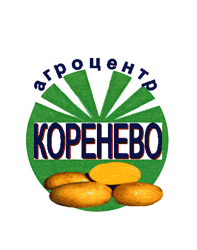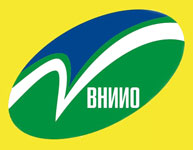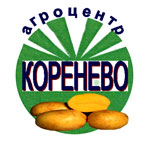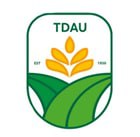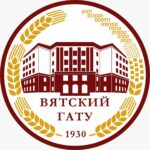UDC 663.612.6:635.21
https://doi.org/10.25630/PAV.2025.93.86.002
Nugmanov A.H.-H., Kvasova T.S., Osmolovskiy P.D., Tolmacheva T.A., Zheltyak L.I.
The antioxidant and antimicrobial properties of many plant extracts are of great interest as natural additives in both the pharmaceutical and food industries, particularly the distillery. Extracts in the distillery industry make it possible to create original and competitive drinks, mainly related to the category of bitter tinctures, among which tinctures based on hot capsicum, belonging to the group of plant species from the genus Capsicum of the Solanaceae family, have gained the most popularity. It is well known that the fruits of capsicum, depending on the variety, vary in color, sharpness and size. Ripe fruits have a color from white to dark red, while the intensity of the red color and sharpness are the main parameters of their quality. The carotenoid pigment lycopene is mainly responsible for the red color, and the alkaloid capsaicin is responsible for the sharpness. The degree of spiciness in cultivated varieties of all types of capsicum is usually measured in Scoville thermal units, the value of which varies from 0 (bell pepper) to about 2–3 million units (hot pepper). It should be noted that capsaicin is a strong irritant that requires the use of protective glasses, respirators and compliance with the rules for handling hazardous materials, and therefore research is currently underway to improve extraction methods from hot pepper fruits by selectively removing capsaicinoids. In particular, some research focuses on the development of fractionated extraction methods. This article presents the results of a study related to the use of two–stage extraction, where the extraction of extractives from dry whole pepper is carried out at the first stage, and from ground raffinate at the second stage. This approach made it possible to reduce the dangerous effects of burning substances on practitioners directly involved in this technological operation, as well as to obtain two extracts with different concentrations of solids and severity.
Key words: capsicum, distillery industry, bitter tincture, extraction, Scoville Heat Unit
Nugmanov A.H.–H. (author for correspondence), D. Sci. (Techn.), professor, professor of the Department of Technology of Storage and Processing of Fruit and Vegetable and Crop Products. E-mail: albert909@yandex.ru
Kvasova T.S., postgraduate student of the Department of Technology of Storage and Processing of Fruit and Vegetable and Crop Products. E-mail: tanyak00@mail.ru
Osmolovskiy P.D., Cand. Sci. (Agr.), associate professor of the Department of Technology of Storage and Processing of Fruit and Vegetable and Crop Products. E-mail: pavel.osmolovsku@mail.ru
Tolmacheva T.A., Cand. Sci. (Biol.), associate professor, lecturer at the Technological College. E-mail: tolmacheva-tat@mail.ru
Zheltyak L.I., Master's student of the Department of Technology of Storage and Processing of Fruit and Vegetable and Crop Products. E-mail: liudmilazheltyak@yandex.ru Russian State Agrarian University – Moscow Timiryazev Agricultural Academy (RSAU–MTAA after K.A. Timiryazev)
- Efremov I.B., Nikolaev A.N., Efremov B.A. Innovative technology and equipment for the production of extracts for enterprises of the distillery industry. Bulletin of Kazan Technological University. 2016. Vol. 19. No16. Pp. 51–52. (In Russ.).
- Loginova E.A. New types of flavored alcoholic beverages. Modern problems of science and education. 2009. No3–2. Pp. 81–81. (In Russ.).
- Dydyshko N.V., Nikonovich T.V. Analysis of the hot pepper market and prospects for its production in Belarus // Problems of Economics. 2019. No1(28). Pp. 75–83. (In Russ.).
- The genus capsicum: a review of the bioactive properties of its polyphenolic and capsaicinoid composition. R. Alonso-Villegas, R.M. Gonzalez-Amaro, C.Y. Figueroa-Hernandez, I.M. Rodriguez-Buenfil. Molecules. 2023. Is. 28. Vol. 10. P. 4239.
- Breeding novelties of vegetable pepper and the basics of product storage. E.A. Kondratenko, A.A. Pinchenkova, E.N. Nobelova, E.A. Krasnoselova // Agroindustrial technologies of Central Russia. 2020. No4. Pp. 55–63. (In Russ.).
- Oleoresins from Capsicum spp.: Extraction methods and bioactivity. G. Melgar-Lalanne, A.J.H. Alvarez, M. Jimenez, E. Azuara. Food and Bioprocess Technology. 2017. Vol. 10. Pp. 51–76.
- Wesołowska A., Jadczak D., Grzeszczuk M. Chemical composition of the pepper fruit extracts of hot cultivars Capsicum annuum L. Acta Scientiarum Polonorum Hortorum Cultus. 2011. Vol. 10. Is. 1. Pp. 171–184.
- Comparative study on the chemical composition, antioxidant properties and hypoglycaemic activities of two Capsicum annuum L. cultivars (Acuminatum small and Cerasiferum). R. Tundis, M. Loizzo, F. Menichini, M. Bonesi, f. Conforti, G. Statti, D. De Luca, B. De Cindio. Plant foods for human nutrition. 2011. Vol. 66(3). Pp. 261–269.
- Chemical composition and antimicrobial activity of oleoresin of Capsicum annuum fruits. P.K. Sharma, Sh. Fuloria, S. Alam, M.V. Sri, A. Singh, V.K. Sharma, N. Kumar, V. Subramaniyan, N.K. Fuloria. Mindanao Journal of Science and Technology. 2021. Vol. 19. Is. 1.
- Red pepper (Capsicum annuum) carotenoids as a source of natural food colors: analysis and stability—a review. R. Arimboor, R. Natarajan, K.R. Menon, L.P. Chandrasekhar, V. Moorkoth. Journal of food science and technology. 2015. Vol. 52. Is. 3. Pp. 1258–1271.
- Evaluation of different solvent systems for the extraction and fractionation of oleoresins from guajillo peppers. C.A. Amaya Guerra, S.O. Serna-Saldivar, E. Cardenas, J.A. Nevero Muũnoz. Archivos Latinoamericanos de Nutrición. 1997. Vol. 47(2). Pp. 127–130.
- Stage extraction of capsaicinoids and red pigments from fresh red pepper (Capsicum) fruits with ethanol as solvent. X. Dong, X. Li, L. Ding, F. Cui, Z. Tang, Zh. Liu. LWT-Food Science and Technology. 2014. Vol. 59. Is. 1. Pp. 396–402.
- Copyright certificate No379258 A1 USSR, IPC A23L 1/28. Method of obtaining red hot pepper extract: No1691245/28-13: application. 08/16/1971: published. 04/20/1973. A.N. Katyuzhanskaya, Ya.S. Meerov; applicant Krasnodar Scientific Research Institute of Food Industry. (In Russ.).
- Comparative assessment of the pungency of pepper by organoleptic and instrumental methods. E.G. Kekina, N.A. Golubkina, M.I. Mammadov, E.A. Jos, O.N. Pyshnaya, S.M. Reliably. Vegetables of Russia. 2015. No1. Pp. 43–47. (In Russ.).
- Lebedev V.N. Fundamentals of experimental data processing using the Excel spreadsheet processor : A textbook for students of pedagogical specialties. V. N. Lebedev, G. A. Uraev. Russian State Pedagogical University named after A. I. Herzen. St. Petersburg. 2021. 54 p. (In Russ.).
- Determination of rational technological parameters of the Soxlet extractor in the production of alcoholic tincture from cranberry berries. B.N. Fedorenko, D.M. Borodulin, M.V. Prosin, A.V. Shafray, B.A. Lobasenko, Ya.S. Golovacheva. Machinery and technology of food production. 2020. Vol. 50. No1. Pp. 115–123. (In Russ.).
PDF(Rus)
For citing: Improving the technology of obtaining alcohol extracts from capsicum fruits for the production of bitter tincture. A.H.-H. Nugmanov, T.S. Kvasova, P.D. Osmolovskiy, T.A. Tolmacheva, L.I. Zheltyak. Potato and vegetables. 2025. No5. Pp. 37-43. https://doi.org/10.25630/PAV.2025.93.86.002 (In Russ.).

